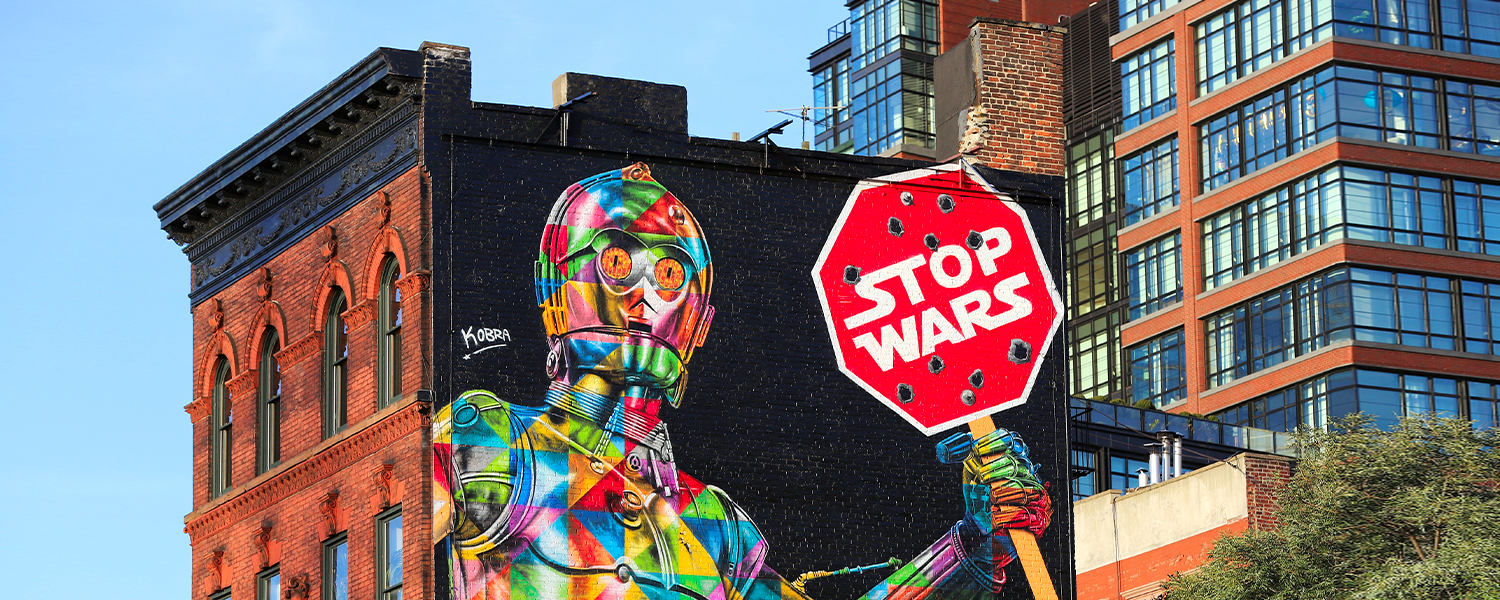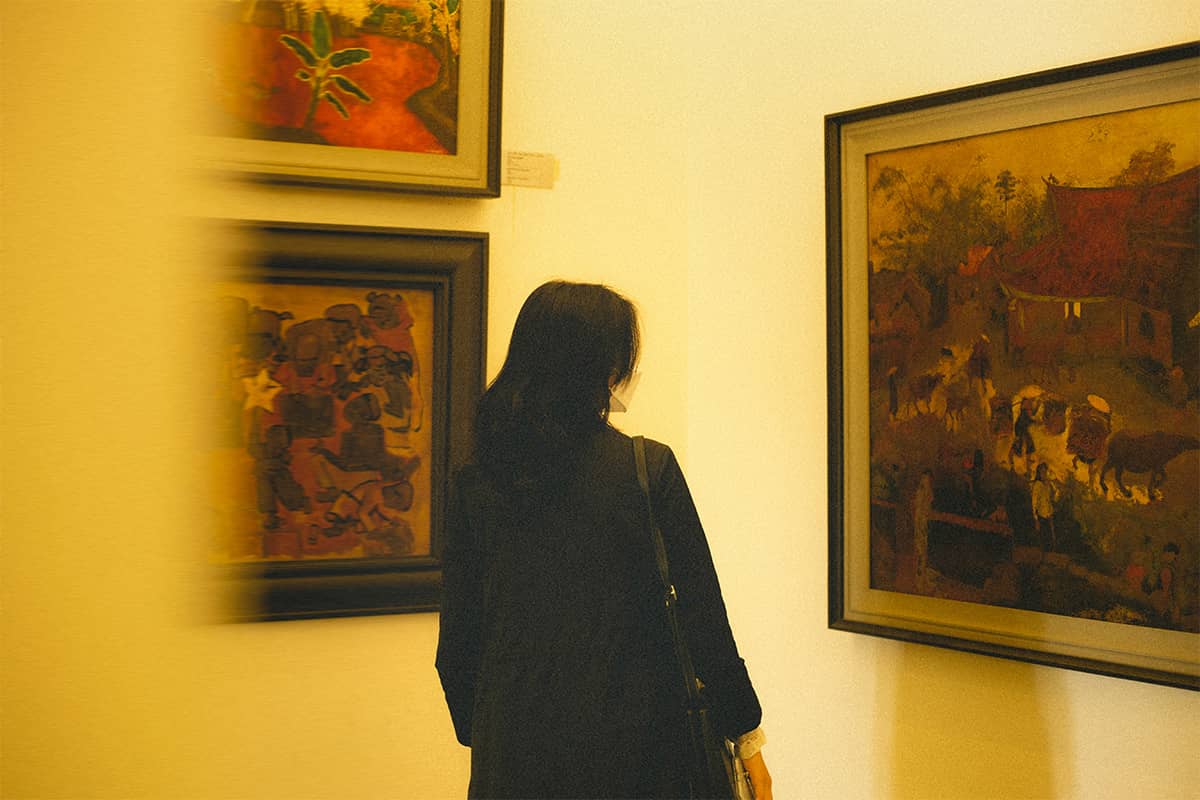Have you ever considered that art galleries are more than just repositories of paintings and sculptures? They are dynamic ecosystems that breathe life into communities, fostering creativity, driving economic growth, and preserving cultural heritage. They are more than brick and mortar; they are vital threads in the fabric of society.
Indeed, art galleries are not merely spaces to observe art; they are vibrant hubs of cultural exchange, incubators of creativity, and catalysts for community engagement. They are essential threads in the rich tapestry of human experience, connecting us to the past, illuminating the present, and inspiring the future. Art galleries transcend the simple act of displaying artwork. They are home to pieces speaking histories and stories of mankind in varied individualistic fashion. The real purpose of these spaces is to foster the spirit and culture of the artistic community while also encouraging them and addressing social issues. They influence how we perceive art, how artists gain exposure, and how communities celebrate creativity. They are places where people come not just to enjoy artwork but also to receive fuel for their daily lives.
To illustrate the multifaceted impact of art galleries, consider the following data:
- Unmasking The Glasgow Smile History Meaning Impact
- Telugu Movies 2025 Where To Watch Online Streaming Guide
| Aspect | Impact |
| Cultural Identity | Shape the cultural identity of a place by providing a platform for artists, fostering education, and stimulating economic growth. |
| Urban Development | Play a vital role in urban planning and community development, which boosts local economies and leads to more innovation, cultural variety, and civic involvement. |
| Cultural Development | Play a pivotal role in cultural development by serving as venues for the exhibition and promotion of visual arts. |
| Community Enrichment | Provide a platform for artists to showcase their work, foster cultural exchange, and contribute to the enrichment of communities. |
| Economic Vitality | Give artists a place to show off their work, spread cultural awareness, and help the local economy. |
Source: Based on findings from a survey of business leaders in the arts sector.
Art galleries are not isolated entities; they are deeply intertwined with the social, economic, and cultural fabric of their communities. They are spaces that celebrate diversity, spark education, and bring communities together. They play a pivotal role in cultural development by serving as venues for the exhibition and promotion of visual arts. By providing a platform for artists, fostering education, and stimulating economic growth, galleries shape the cultural identity of a place. Art galleries play a vital role in urban planning and community development, which boosts local economies and leads to more innovation, cultural variety, and civic involvement.
Indeed, the entrance to a gallery sets the tone for a young visitor's experience, opening up new worlds of perception and understanding. Local art galleries play a crucial role in supporting and showcasing these talented artists, enriching the communitys cultural landscape. This article delves into the importance of art galleries and how they contribute to the local arts scene, economy, and sense of cultural identity.
- Fix Instagram Comment Hiding Why How To Unhide Explained
- The Stasis Shadow East German Surveillance Lives
Through a variety of formspainting, music, dance, sculpture, theater, and many othersart provides a visual, auditory, or kinesthetic representation of cultural identity. Art is a powerful reflection of culture. It captures the values, beliefs, struggles, and triumphs of a society. Local museums can provide a sense of community and place by celebrating a collective heritage, offering a great way to learn about the history of a particular area.
Consider, for instance, the Hove Museum and Art Gallery, located in Hove near Brighton. Housed in an Italianate Victorian building, it stands as a testament to the power of local institutions to preserve and promote cultural identity. The work they do highlights the importance of art galleries to culture, community, and much more. Art galleries are not just places to look at artthey are spaces that celebrate diversity, spark education, and bring communities together.
Art exhibitions serve as vital forums for curators, art historians, artists, and contemporary critics to discuss particular art forms and learn more about them. Exhibitions are a way for artists to communicate with the world. In today's world, collaboration and connection have never been more important. After all, art transforms spaces into experiences. Local art galleries are vital in supporting and showcasing talented artists, enriching the community's cultural landscape. This article delves into the importance of art galleries and how they contribute to the local arts scene, economy, and sense of cultural identity.
Art exhibitions are invaluable for both viewers and artists. For artists, exhibitions provide a platform to share their work, receive feedback, and gain recognition. For viewers, exhibitions offer the opportunity to engage with art, learn about different cultures, and broaden their perspectives. Never has collaboration and connection been more important in our world, and art galleries provide the space for just that.
The impact of art galleries extends beyond the purely aesthetic. They play a crucial role in urban planning and community development, which boosts local economies and leads to more innovation, cultural variety, and civic involvement. Art galleries are very important to the art world because they give artists a place to show off their work, spread cultural awareness, and help the local economy. This blog will explore why an art gallery is important and its impact on individuals and communities.
Art galleries play a pivotal role in cultural development by serving as venues for the exhibition and promotion of visual arts. They provide a platform for artists to showcase their work, foster cultural exchange, and contribute to the enrichment of communities. This article delves into the multifaceted role of art galleries in the modern world, focusing on their functions, contributions to society, and how they adapt to contemporary challenges.
In essence, art galleries are more than just places to view art; they are vital components of a thriving society. They are essential threads in the rich tapestry of human experience, connecting us to the past, illuminating the present, and inspiring the future. By understanding their multifaceted role, we can better appreciate their importance and support their continued growth and development.
Consider the role of art in reflecting and shaping culture. Art captures the values, beliefs, struggles, and triumphs of a society. It serves as a powerful tool for communication, education, and social change. By providing a platform for artists, art galleries help to preserve and promote cultural heritage, ensuring that the stories of the past are not forgotten.
Furthermore, art galleries contribute to economic growth by attracting tourists, supporting local businesses, and creating jobs. They are often located in vibrant urban areas, serving as anchors for revitalization and development. By fostering creativity and innovation, art galleries help to create a more dynamic and prosperous society.
In addition to their economic and cultural contributions, art galleries also play a vital role in education. They offer a wide range of programs and activities for people of all ages, from guided tours and workshops to lectures and demonstrations. By providing access to art, art galleries help to foster creativity, critical thinking, and problem-solving skills.
Art galleries are also important for promoting social inclusion and diversity. They provide a platform for artists from different backgrounds and perspectives to share their work, fostering dialogue and understanding. By celebrating diversity, art galleries help to create a more inclusive and equitable society.
The role of art galleries extends beyond the purely aesthetic. They are vital components of a thriving society, contributing to economic growth, cultural preservation, education, and social inclusion. By understanding their multifaceted role, we can better appreciate their importance and support their continued growth and development.
Art galleries are also essential for fostering innovation and creativity. They provide a space for artists to experiment, take risks, and push the boundaries of artistic expression. By supporting innovation, art galleries help to drive progress and create a more vibrant and dynamic society.
Moreover, art galleries play a crucial role in promoting mental health and well-being. Studies have shown that engaging with art can reduce stress, improve mood, and enhance cognitive function. By providing access to art, art galleries help to create a more healthy and resilient society.
Art galleries are not just places to look at art; they are vital components of a thriving society, contributing to economic growth, cultural preservation, education, social inclusion, innovation, creativity, and mental health. By understanding their multifaceted role, we can better appreciate their importance and support their continued growth and development.
They are spaces of contemplation, inspiration, and connection. They are places where we can explore the depths of human experience, celebrate the beauty of the world around us, and find common ground with others. By supporting art galleries, we are investing in the future of our communities and the well-being of our society.
Art galleries are also essential for promoting cultural tourism. They attract visitors from around the world, contributing to local economies and enhancing the reputation of their host cities. By showcasing the unique artistic heritage of a region, art galleries help to create a more vibrant and attractive tourist destination.
Furthermore, art galleries play a crucial role in preserving and protecting cultural heritage. They collect, conserve, and exhibit works of art from different periods and cultures, ensuring that these treasures are passed on to future generations. By safeguarding our cultural heritage, art galleries help to preserve our collective identity and sense of belonging.
Art galleries are also important for fostering a sense of community. They provide a space for people to come together, share ideas, and build relationships. By creating a sense of community, art galleries help to strengthen social bonds and promote civic engagement.
In addition to their cultural and economic contributions, art galleries also play a vital role in promoting environmental sustainability. They often adopt eco-friendly practices, such as reducing waste, conserving energy, and using sustainable materials. By promoting environmental sustainability, art galleries help to create a more responsible and environmentally conscious society.
Art galleries are not just places to look at art; they are vital components of a thriving society, contributing to economic growth, cultural preservation, education, social inclusion, innovation, creativity, mental health, cultural tourism, community building, and environmental sustainability. By understanding their multifaceted role, we can better appreciate their importance and support their continued growth and development.
They are spaces of wonder, inspiration, and transformation. They are places where we can connect with our shared humanity, explore the mysteries of the universe, and find hope for the future. By supporting art galleries, we are investing in a more vibrant, sustainable, and equitable world.
Art galleries are also essential for promoting cultural diplomacy. They provide a platform for artists from different countries to showcase their work, fostering dialogue and understanding between cultures. By promoting cultural diplomacy, art galleries help to build bridges between nations and promote peace and cooperation.
Furthermore, art galleries play a crucial role in supporting emerging artists. They provide opportunities for young and aspiring artists to exhibit their work, gain recognition, and develop their careers. By supporting emerging artists, art galleries help to ensure that the art world continues to evolve and innovate.
Art galleries are also important for promoting arts education. They offer a wide range of programs and activities for students of all ages, from school tours and workshops to internships and mentorships. By promoting arts education, art galleries help to cultivate the next generation of artists, art historians, and art enthusiasts.
In addition to their cultural and educational contributions, art galleries also play a vital role in promoting social justice. They often address social issues, such as poverty, inequality, and discrimination, through their exhibitions and programs. By promoting social justice, art galleries help to create a more equitable and inclusive society.
Art galleries are not just places to look at art; they are vital components of a thriving society, contributing to economic growth, cultural preservation, education, social inclusion, innovation, creativity, mental health, cultural tourism, community building, environmental sustainability, cultural diplomacy, artist support, arts education, and social justice. By understanding their multifaceted role, we can better appreciate their importance and support their continued growth and development.
They are spaces of inspiration, reflection, and transformation. They are places where we can connect with our shared humanity, celebrate the diversity of cultures, and find hope for a better future. By supporting art galleries, we are investing in a more vibrant, sustainable, equitable, and just world.



Detail Author:
- Name : Keith Rodriguez
- Username : schmidt.lorine
- Email : brant21@adams.com
- Birthdate : 1992-06-28
- Address : 799 Tracy Forks Weissnatmouth, NJ 88954-9895
- Phone : 1-515-970-2978
- Company : Funk, O'Kon and Lakin
- Job : Military Officer
- Bio : Voluptatem ab et fuga. Quam minima nulla est perspiciatis sit sapiente voluptatem. Rem voluptatum vitae quis rerum accusantium accusantium quis.
Socials
linkedin:
- url : https://linkedin.com/in/abnerfadel
- username : abnerfadel
- bio : Doloremque officia est nemo maiores ea eum.
- followers : 2941
- following : 1661
twitter:
- url : https://twitter.com/abner_xx
- username : abner_xx
- bio : Autem voluptas dolorem tenetur omnis omnis porro. Qui dolorum voluptatem quas iure consequatur neque vero. Aut totam et tenetur.
- followers : 6710
- following : 323